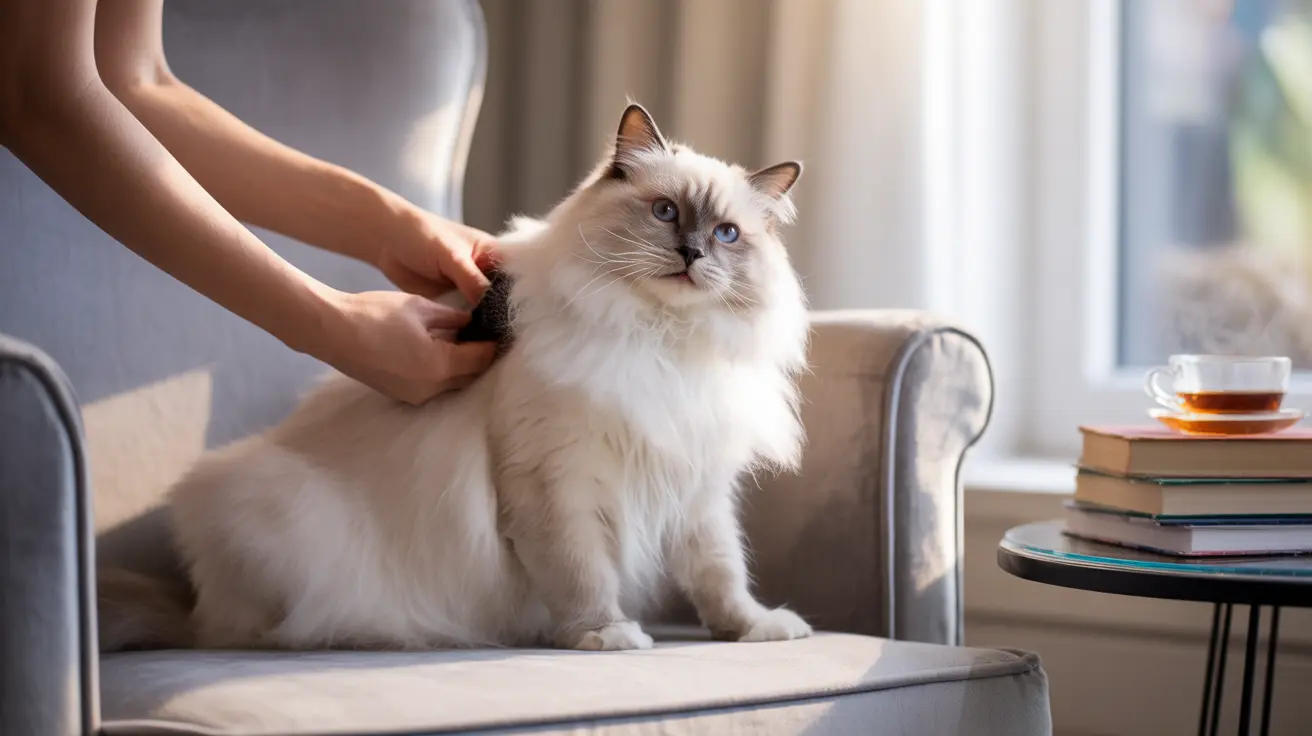If you've heard about Ragdoll shorthair cats, you might be wondering whether these beautiful felines actually exist. The truth is more complex than you might think. Let's dive into the facts about Ragdoll cats, their coat types, and clear up some common misconceptions about shorthaired varieties.
Understanding the true nature of Ragdoll cats' coats is essential for anyone interested in this magnificent breed. While some cats may be marketed as "shorthair Ragdolls," it's important to know that authentic Ragdolls are exclusively semi-longhaired according to all major breeding standards.
The Truth About Ragdoll Coat Types
Purebred Ragdolls are characterized by their luxurious semi-long coat, which is one of their defining features. This silky, plush fur lacks the dense undercoat found in many other long-haired breeds, making it relatively easy to maintain despite its length.
These cats are born completely white, with their distinctive color patterns developing gradually over time. Their full coat typically reaches its mature length and coloration between ages 2-4 years.
Why "Shorthair Ragdolls" Don't Officially Exist
When you encounter a cat marketed as a Ragdoll shorthair, it's important to understand that this is not a recognized variety. All major cat registries, including TICA, CFA, and GCCF, only recognize semi-longhaired Ragdolls as meeting breed standards.
Cats labeled as shorthair Ragdolls are typically:
- Crossbreeds with other shorthaired breeds
- Young Ragdolls whose full coat hasn't developed yet
- Misidentified or incorrectly marketed cats
Caring for Your Ragdoll's Coat
Whether your Ragdoll is still developing its coat or has reached full maturity, proper grooming is essential. Regular maintenance helps prevent matting and keeps their signature silky fur in prime condition.
Key grooming practices include:
- Brushing 2-3 times per week
- Using appropriate grooming tools like slicker brushes and wide-toothed combs
- Regular checking for tangles, especially around the collar area and underbelly
- Occasional bathing when necessary
Understanding Ragdoll Development
Many people mistake young Ragdolls for shorthaired cats because their distinctive coat develops slowly. Kittens start with shorter fur that gradually lengthens and thickens over time. This developmental process is completely normal and shouldn't be confused with a "shorthair variety."
What to Look for in a Pure Ragdoll
When seeking a purebred Ragdoll, ensure the cat has:
- Semi-long, silky coat
- Traditional color points, mitted, or bicolor patterns
- Striking blue eyes
- Large, muscular build
- Proper documentation from a reputable breeder
Frequently Asked Questions
Can Ragdoll cats have a short coat, or are they only semi-longhaired?
Authentic Ragdolls are exclusively semi-longhaired according to all official breed standards. Any cat marketed as a shorthair Ragdoll is either a crossbreed or not a true Ragdoll.
How often should I groom my Ragdoll cat to maintain its silky coat?
Ragdolls should be groomed 2-3 times per week to maintain their coat's condition and prevent matting. More frequent grooming may be needed during seasonal shedding periods.
What are the main Ragdoll coat patterns and colors I should know about?
Ragdolls come in three main patterns: colorpoint, mitted, and bicolor. Colors include seal, blue, chocolate, lilac, red, and cream, with variations including tortoiseshell and lynx/tabby patterns.
How can I tell if a "shorthair Ragdoll" is a purebred or a crossbreed?
A true Ragdoll will always have a semi-long coat. If the cat has a short coat, it is definitively not a purebred Ragdoll, regardless of other physical characteristics or claimed lineage.
What grooming tools and techniques are best for preventing mats in a Ragdoll's coat?
Use a combination of slicker brushes and wide-toothed combs. Focus on prone areas like the chest, behind the ears, and underbelly. Regular, gentle grooming sessions are more effective than infrequent, aggressive ones.






